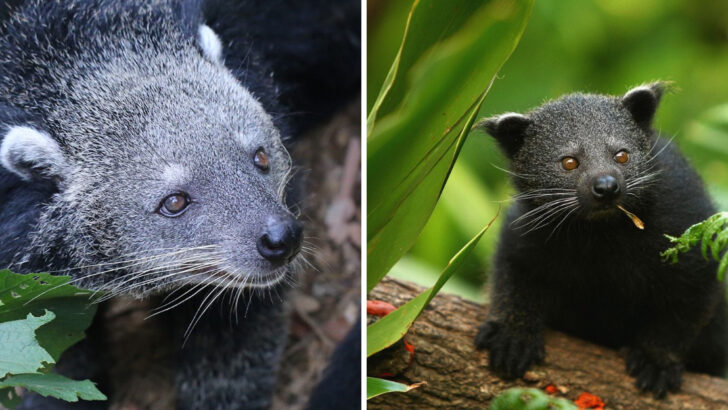The binturong is part bear, part cat, and smells like buttered popcorn—but most people have never even heard of it.
Hidden deep in the rainforests of Southeast Asia, this elusive creature spends its life lounging in trees, using a prehensile tail like a fifth limb. It’s mysterious, adorable, and critically endangered.
With thick black fur, long whiskers, and a face that always looks a little grumpy, the binturong is unlike anything else in the animal kingdom. Despite its cuddly appearance, it plays a major role in keeping forests alive, helping to spread seeds that grow into towering trees.
So why is such a fascinating creature disappearing? From habitat destruction to illegal pet trade, the binturong faces more threats than ever before. Let’s dive into 14 incredible facts about this jungle-dwelling oddball—and why it desperately needs our help.
Appearance and Size
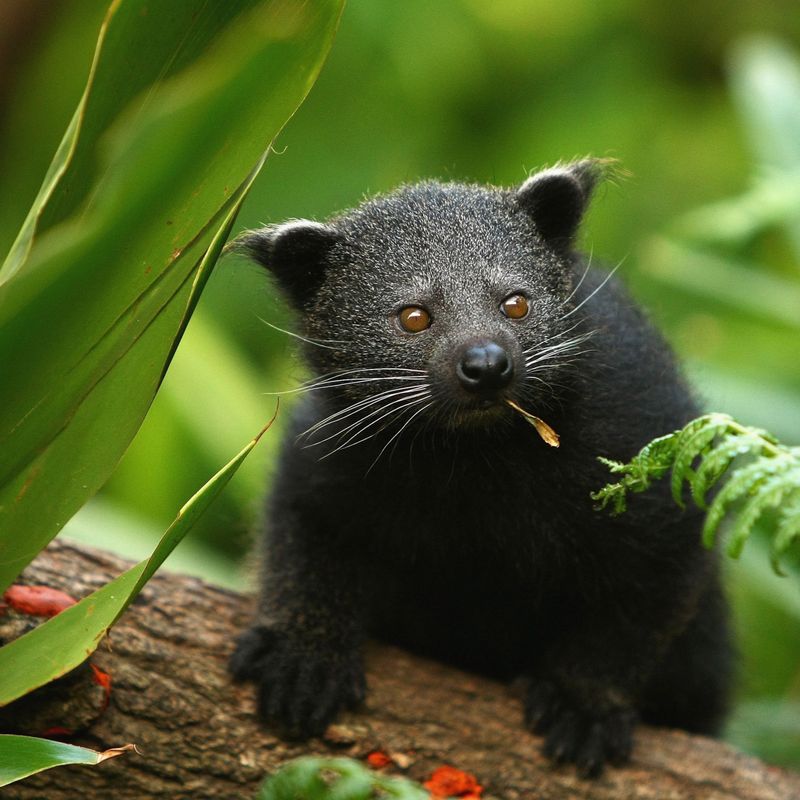
Binturongs are medium-sized mammals resembling a mix between a bear and a cat, hence the nickname ‘bearcat’. They have coarse, shaggy black fur and a prehensile tail that aids in climbing. Weighing between 22 to 44 pounds, they measure about 2 to 3 feet in length, not including their tails, which can be as long as their bodies. Their whiskers are notably long, aiding their nocturnal lifestyle. Despite their somewhat intimidating appearance, binturongs are generally shy and reclusive, preferring the safety of the treetops in their forest habitats.
Habitat and Range

Binturongs are native to the dense tropical rainforests of Southeast Asia, including countries like Malaysia, Indonesia, and the Philippines. They are arboreal creatures, spending most of their time in the treetops where they feel safest. The canopy of these rainforests offers them plenty of cover from predators and access to a variety of fruits and small animals. However, due to deforestation and habitat destruction, their natural habitats are increasingly under threat, leading to a decline in their population. Protecting these habitats is crucial for their survival.
Unique Scent Marking
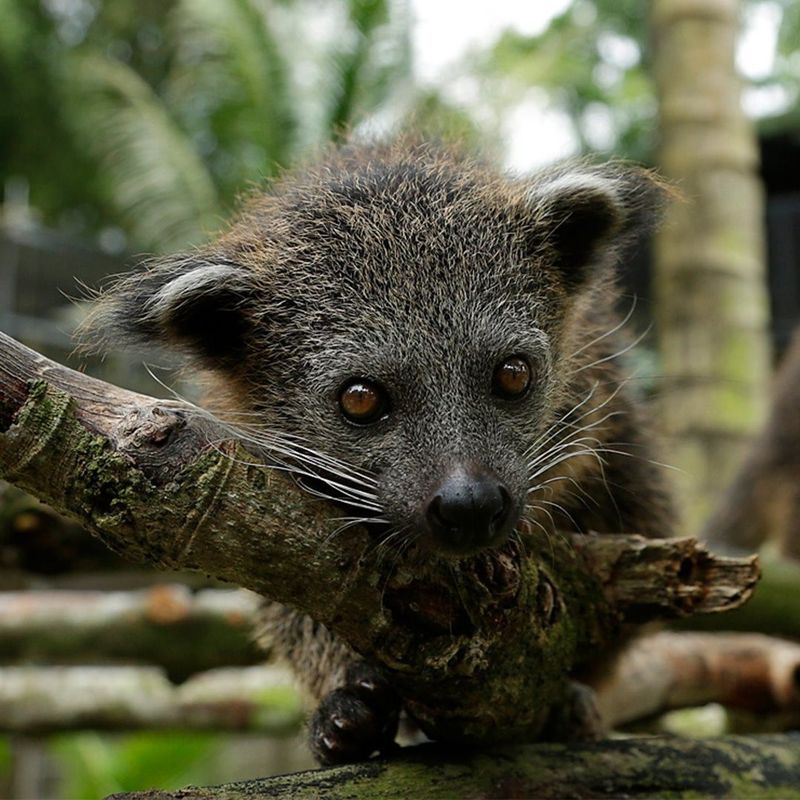
Binturongs are known for their unique scent, which is often compared to the smell of buttered popcorn. This distinctive aroma comes from a gland located under their tail, which they use to mark their territory. By dragging their tails along branches, they leave behind a scent trail that communicates their presence to other binturongs. This scent marking is essential for maintaining their territory and avoiding conflicts with other animals. The popcorn-like smell is one of the most recognizable and intriguing features of these unique creatures.
Diet and Foraging
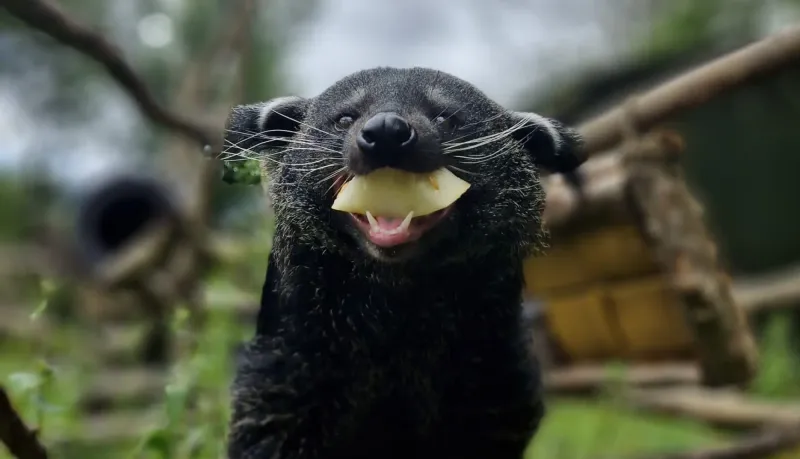
As omnivores, binturongs have a diverse diet that includes fruits, small animals, and insects. They play a crucial role in their ecosystem by helping to disperse seeds through their droppings, thus aiding in forest regeneration. Figs are a particular favorite, and these creatures are adept at climbing to reach the ripest fruits. Their sharp claws and prehensile tails assist them in foraging among the branches. The binturong’s diet reflects its adaptability, enabling it to thrive in the wild until habitat loss began threatening its food sources.
Behavior and Social Structure

Binturongs are generally solitary creatures, but they do exhibit social behaviors, particularly during the mating season. They communicate using a variety of vocalizations, from chuckles to hisses, which help them express different emotions and intentions. Grooming is another social activity that strengthens bonds between individuals. While often seen alone, mothers will stay with their young until they are independent. Their social structure is flexible, allowing them to adapt to changing environments, although human disturbances are increasingly disrupting their traditional behaviors.
Conservation Status
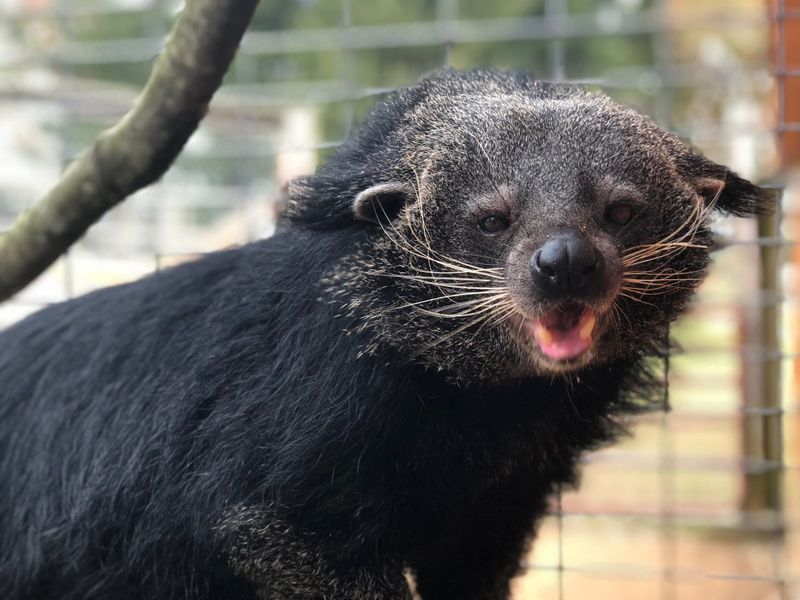
The binturong is classified as vulnerable on the IUCN Red List, with its population steadily declining due to habitat loss and hunting. Deforestation for palm oil plantations and illegal wildlife trade are major threats. Conservation efforts are underway to protect their habitats and enforce anti-poaching laws. Organizations are also working to educate the public about the importance of preserving this unique species. Captive breeding programs aim to boost their numbers, but protecting wild populations is critical for their long-term survival. Collaborative global efforts are needed to ensure their future.
Role in Ecosystem

Binturongs play a vital role in their ecosystem as seed dispersers. By consuming fruits and dispersing seeds through their feces, they contribute to the growth and regeneration of their forest habitats. This ecological role supports biodiversity and helps maintain the balance of the rainforest ecosystem. As apex arboreal omnivores, they help control the populations of smaller animals and insects, which impacts the food chain dynamics. Protecting binturongs not only preserves a unique species but also supports the overall health of the ecosystem they inhabit.
Nocturnal Lifestyle
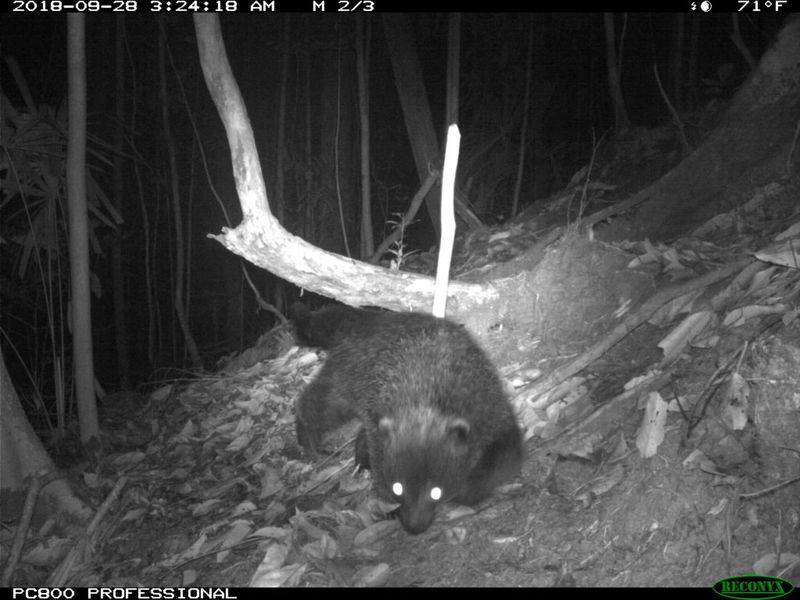
Binturongs are primarily nocturnal, meaning they are most active during the night. This lifestyle allows them to avoid predators and the intense heat of the day. Their large eyes and acute sense of smell aid them in navigating the forest under the cover of darkness. Nighttime is when they hunt for food and engage in social activities. Unfortunately, their nocturnal habits make them less visible to humans, which can lead to misunderstandings about their behavior and ecology. Understanding their nighttime activities is key to conserving their populations.
Reproduction and Offspring

Binturongs have an interesting reproductive cycle, with females able to delay implantation to time the birth of their young. This adaptation ensures that offspring are born when conditions are most favorable. Typically, a female gives birth to one to three cubs, which she raises alone. The young are completely dependent on their mother for the first few months as they learn to climb, forage, and survive. This maternal care is crucial for the cubs’ survival, especially in increasingly fragmented habitats. Efforts to safeguard breeding grounds are vital.
Unique Physical Features
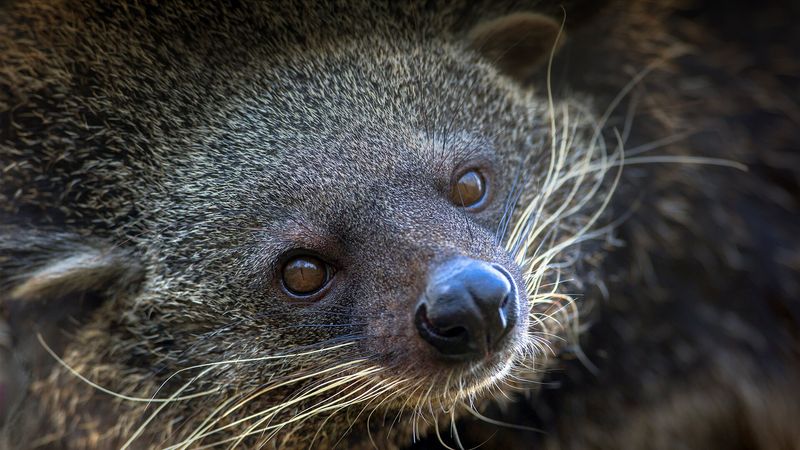
One of the most striking features of the binturong is its long, white whiskers, which can grow longer than its head. These whiskers are highly sensitive, helping the binturong detect its environment, particularly at night. Their tail is another remarkable feature, acting as a fifth limb, it provides balance and grip as they move among the trees. Their sharp claws are essential for climbing and foraging. These physical adaptations make the binturong a highly skilled arboreal animal, perfectly suited for life in the dense rainforest canopy.
Cultural Significance

In some Southeast Asian cultures, the binturong holds cultural significance and is often featured in local folklore. It is sometimes considered a symbol of mystery due to its elusive nature and unique characteristics. In certain regions, it is believed to bring good luck or is admired for its strength and agility. However, despite its cultural value, myths surrounding the binturong have not always translated into conservation efforts. Increasing awareness of its plight and promoting its cultural significance can play a role in boosting conservation support.
Adaptation to Climate
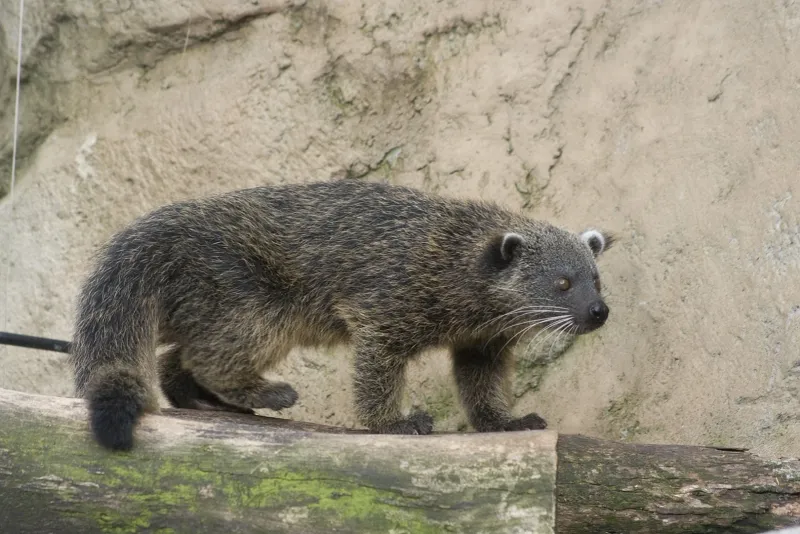
The binturong is well-adapted to the humid and warm climates of Southeast Asia. Its thick fur provides protection against heavy rainfall, while its nocturnal habits help it cope with the high daytime temperatures. These adaptations allow it to thrive in its natural habitat. However, climate change poses new challenges, with altered weather patterns affecting food availability and habitat conditions. Conservation strategies must consider these changes to ensure that binturongs can continue to survive in their evolving environments. Adaptive management is key to their conservation.
Conservation Efforts

Various organizations are actively working to conserve the binturong and its habitat. Reforestation projects aim to restore lost habitats, providing safe spaces for these creatures to live and thrive. Anti-poaching initiatives and stricter enforcement of wildlife protection laws are crucial to combat illegal hunting. Collaboration with local communities helps promote sustainable practices and biodiversity conservation. Supporting these efforts through donations and volunteering can make a significant difference. International cooperation and awareness campaigns are vital to ensure the long-term survival of the binturong.
Future Prospects

The future of the binturong depends largely on our collective conservation efforts. With growing awareness and international collaboration, there is hope for reversing the decline of this species. Successful conservation programs can lead to stable or increasing population numbers, securing their place in the wild. By addressing threats such as habitat loss and illegal wildlife trade, we can create a safer environment for binturongs to thrive. Continued research and adaptive management strategies are essential to navigate the challenges posed by climate change and human activities.

